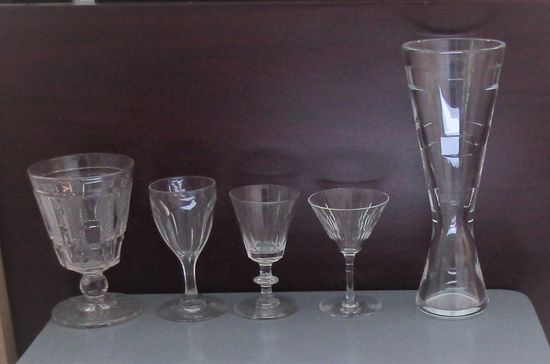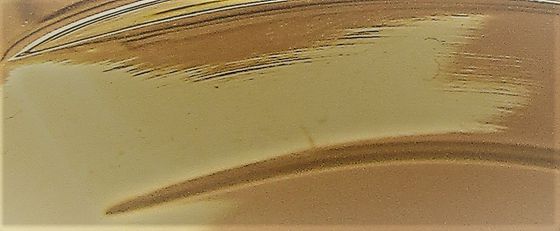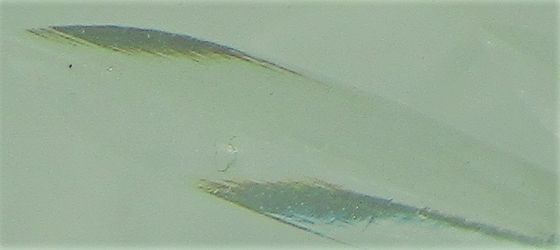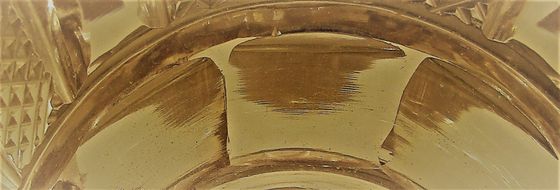
ABOUT
IPD GLASS POLISHING - THE HOME OF GLASS RESTORATION
Way back in the late 1980s whilst attending an antiques fair I found myself in conversation with one of the glass experts from a leading auction house who regularly appeared on BBC's Antiques Roadshow. During this conversation I mentioned my desire to have a deep scratch restored on a lovely vase I owned. The gentleman told me it could not be done as it would require grinding and polishing which would leave detectable marks on the glass. He went on to describe what to look for he also stated that “no matter how fine a grinding medium used the marks will still be present”.

This High Definition photo of a cut panel on the Waterford vase designed by John Rocha, to the right in the photo above, clearly shows the marks typically left when a glass surface is ground then polished.
These marks can be found on all items that have been ground and polished without the smoothing stage, they are due to the fact that glass is a solid with the molecular structure of a liquid, as a result when it is scratched instead of the nice neat slice into the surface that you would find on true solid materials, on glass we find a series of chips of varying widths and depths all connected together.
I am sure you will agree that all the producers of fine cut glass would have used the finest materials, the best equipment and the most skilled cutters available to them.
Yet there are a multitude of DIY kits available on eBay and the internet that claim their paste, liquid or powder combined with a household drill will remove scratches and miraculously achieve a better result than that achieved by the best in the business.
As all of the kits are based on grinding and polishing, or indeed just polishing, without the smoothing stage I know with absolute confidence that the vast majority, if not all, of these kits will not achieve the results claimed of them.
I needed to find a process between grinding and polishing that wore down the glass surface without chipping.
Everyone I approached gave me the same advise as the glass expert, scratches can't be removed successfully.
I then spent years trying every “old wives tale” going the rounds and believe me they are all just that “old wives tales”. Up until this time the only thing I had done with glass was to collect antique & collectable items from car boot sales, junk shops, charity shops etc. and wash it when dirty, however, by the time I found a solution several years later I knew glass very well indeed.

The photo above shows the cutting on the Edinburgh Crystal, second right in the above photo, you can see the marks that run lengthwise. This also shows how light runs along these blemishes.
-----------------------------------------------------------------------
The photo below is from the Rummer on the far left. The five pieces shown above span 3 centuries of glass cutting and polishing.
I read every book containing references to the treatment of glass and even a hint of something would set me off experimenting.
I spent a lot of time and money on rubbish ideas. LOL
I eventually discovered a combination of materials that were compatible, ticked all the boxes and worked perfectly. I produced three grades GPP01 – GPP02 – GPP03.
I found that using these three grades combined with silicon carbide and cerium oxide I could achieve the correct finish ie. a finish that was smooth and clear and absent of all grinding marks. Furthermore by using them in different combinations I could reproduce different finishes such as frosted or moulded and should the scratch be on a cut surface I could replicate the correct grinding marks. They vary depending on the technique used.


